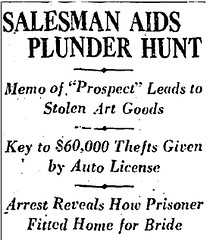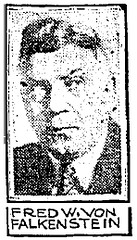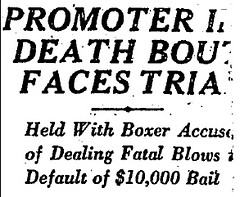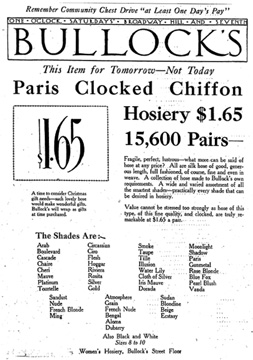September 18, 1927
Inglewood
“A huge bowl of punch made from high-proof bootleg whisky” stood at the center of a drunken brawl that left one man near death and another on the lam early this morning. When an employee of the automobile wrecking plant located at 10636 Hawthorne Boulevard arrived for work around 8:00 a.m. today, he found Inglewood real estate developer H.C. Mitchell lying in a pool of blood at the back of the garage. Though badly wounded, Mitchell identified plant owner A.H. Van der Mark as his assailant. Officers have yet to verify that Mitchell, who remains in critical condition at Milton Hospital with gunshot wounds to his right lung and leg, is a former official of the Ku Klux Klan. Meanwhile, Van der Mark has disappeared.
Eyewitnesses told different stories, but all agree the shooting occurred after a long night of heavy drinking at Van der Mark’s home (also the site of the wrecking plant). Mr. and Mrs. Charles Proctor told police the party was in full swing when they arrived, with guests freely partaking of the whisky punch. By 3:00 a.m., only the couple, Mitchell, Van der Mark, and Grace Haynes (a widow and the “asserted sweetheart of Van der Mark”) remained. Everything was rosy until Van der Mark allegedly told Mitchell that the latter’s habit of reporting bootleggers to the authorities “would make no difference in their regard for each other.” Apparently these were fighting words, for a scuffle began shortly thereafter. The combatants were separated, but Van der Mark returned with a .22 caliber rifle. The fight recommenced, three shots rang out, Mitchell fell to the kitchen floor, and the Proctors skedaddled. Police believe Mitchell then walked from the kitchen to where he was found in wrecking plant. Neither of the Proctors was held after making their statements.
Grace Haynes, on the other hand, is being held in County Hospital as a material witness. She claims the severe bruising about her head and body was caused by Mitchell, who she says arrived at the party looking for trouble. He had several fistfights with partygoers smaller than himself, including Van der Mark, who wound up knocked out—and presumably unable to avenge his lady’s honor. Haynes’s brother (he wasn’t there, but the Times was happy to interview him anyway) says his sister told him Van der Mark was passed out, not knocked out, but either way, “He was cold when Mitchell pitched into another member of the party and this man got a rifle and shot him.” And who was this man with the rifle? Why, none other than Mr. Charles Proctor. Haynes also told her brother that while everybody else at the party was more or less blotto, she herself was completely—totally!—sober.
To recap, of the five people present at the end of last night’s wild party, three claim Van der Mark shot Mitchell, one claims Proctor did the deed, and the fifth hasn’t been seen since the incident occurred.
In perhaps not unrelated news, the Times reports that the state now holds sixth-place in the nation for the number of “feeble-minded” persons admitted to institutions this year—or, as a headline summed up: “CALIFORNIA IDIOTS GAIN IN NUMBERS.”

 Let us now turn our attention to the male weaverbird, who craft intricate nests to attract a female by stitching and knotting grasses together. Less industrious and ethical is our friend, the starling, who will sometimes steal the nest of another bird for mating.
Let us now turn our attention to the male weaverbird, who craft intricate nests to attract a female by stitching and knotting grasses together. Less industrious and ethical is our friend, the starling, who will sometimes steal the nest of another bird for mating. handed the number over to police who confiscated between 6 and 8 carloads of stolen goods from Von Falkenstein’s home at
handed the number over to police who confiscated between 6 and 8 carloads of stolen goods from Von Falkenstein’s home at 


 The much anticipated rematch between defending heavyweight champion Gene Tunney, the “Fighting Marine”, and former champion Jack Dempsey, the “Manassa Mauler”, will be held at Solider Field in Chicago on September 26, 1927. Tunney will dominate for the first six rounds, but during the seventh round he will find himself in a corner being pummeled by a savage combination of punches that will drive him to the floor.
The much anticipated rematch between defending heavyweight champion Gene Tunney, the “Fighting Marine”, and former champion Jack Dempsey, the “Manassa Mauler”, will be held at Solider Field in Chicago on September 26, 1927. Tunney will dominate for the first six rounds, but during the seventh round he will find himself in a corner being pummeled by a savage combination of punches that will drive him to the floor. 




